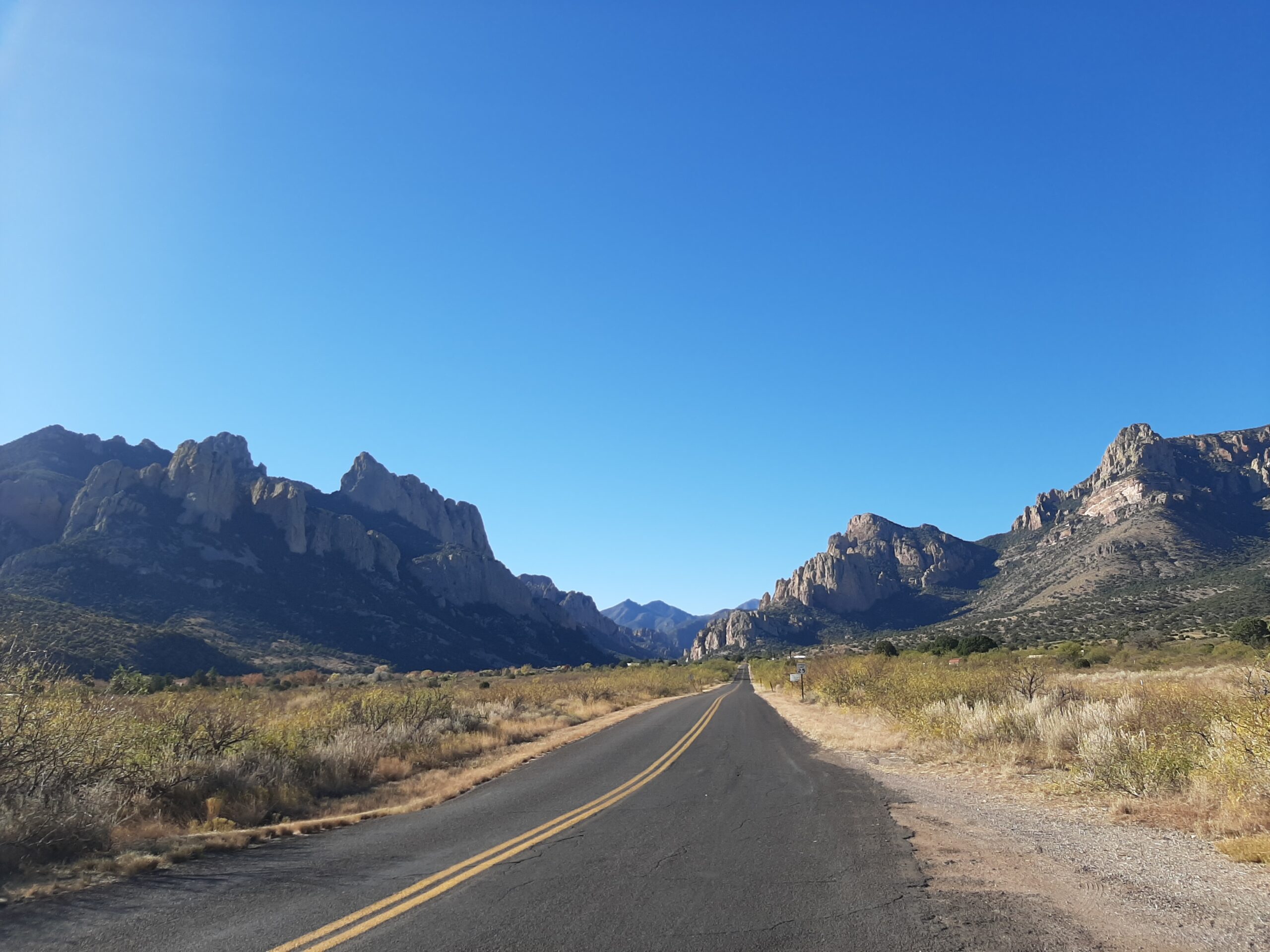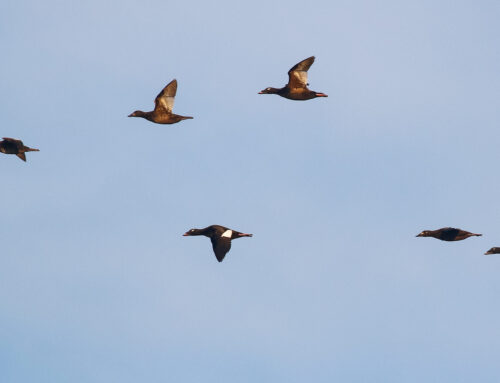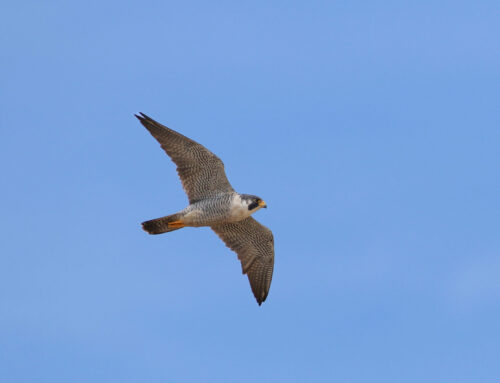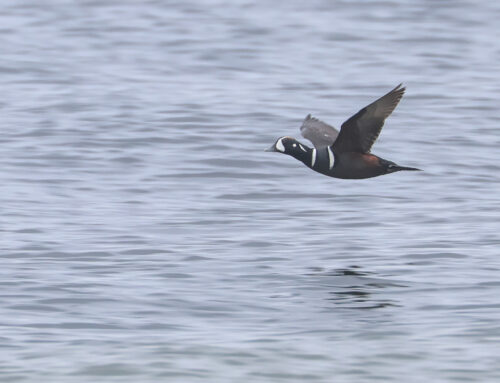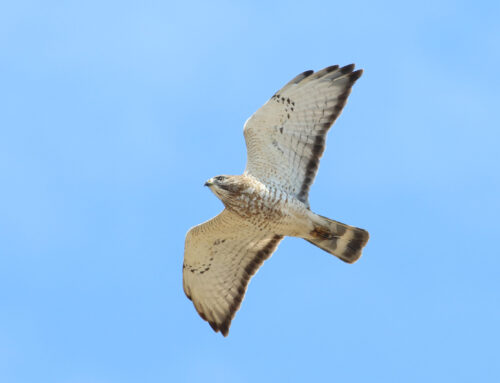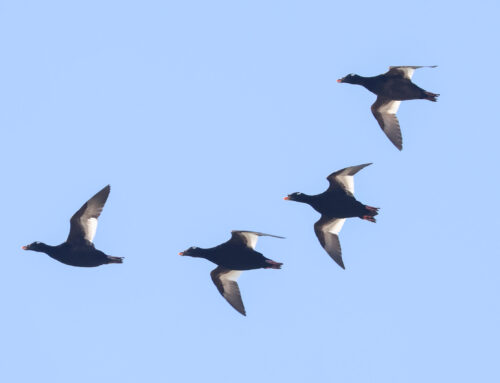Migration is really an awe-inspiring thing when you get down to it. Myriad and multitudes of birds, all different shapes and sizes, migrate from their wintering grounds to their summer breeding grounds. Many birds undertake migrations of many hundreds or thousands of miles, and we can only wonder how the birds do it? Some we know, some remain a mystery.
Sometimes, as I’m watching birds, my mind wanders and I wonder what kind of stories birds would tell if they could talk? Stories of far-flung adventures or narrow escapes? I can tell you without a doubt that, if you know how to listen, the birds will tell you their stories; they’re written in migration. So I have a little story to share.
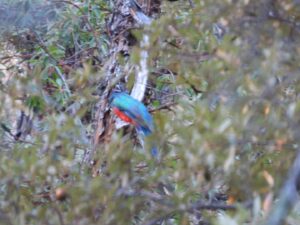
Eared Quetzal. Photo by Nate Crane
Not so long ago, my good friend Nate and I hit the road in search of some rare and much sought-after birds. Nate and I have a common interest and passion for the birds. We did well, finding an Eared Quetzal, among others, and had a lot of fun. For us, it’s as much about the pursuit and chase as actually finding the bird we’re looking for. We also saw new places, new cultures, ate new foods, and met new people — and that’s one of the beauties of birding. Not only do you see and hear really amazing birds, but you also meet and connect with other people through a common thread, the birds! Truly for me, birding is a life-long journey of far-flung adventures, epic chases, and humbling moments of watching hundreds of birds migrate over during spring migration. Or holding a tiny neo-tropic migrant warbler in your hand while banding, a bird who only weighs as much as a couple of dimes yet migrates thousands of miles.

Cave Creek Canyon South Fork
As I stand on the beach here at Whitefish Point, watching birds fly over to Canada just across Lake Superior, I think maybe some of them are the same ones that I saw flying across the Mexico/U.S. border not long ago, and I realize birds don’t recognize borders. We humans, the most brilliant creatures of them all, could learn a thing or two from the birds. Through all this, you make friendships and bonds, memories and stories that last a lifetime! Birding — like migration — is a wild adventure and epic journey, whether I’m standing on a windswept beach watching spring migration or chasing the next rare bird. So for me, to be a bird for a day would be to be free for a lifetime!
Thank you for reading, and happy birding!!
~ Matthew Winkler
2021 WPBO Waterbird Counter
You can see live updates for the 2021 Waterbird Count on Dunkadoo, read Matthew’s weekly blog post, and follow WPBO’s social media (Facebook, Instagram, and Twitter) for waterbird count highlights this season.
If you visit WPBO, please practice social distancing while doing so. Although not required, we encourage you to wear masks if you are in close proximity to other people, even if outdoors.
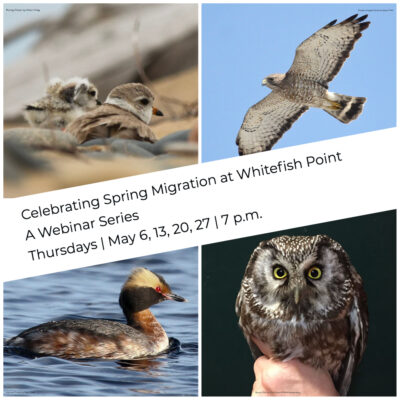
Celebrating Spring Migration at Whitefish Point — A Webinar Series
Demystifying Great Lakes Waterbirds
May 20 | 7 p.m.
Having trouble distinguishing what dabbling duck you are observing? Or maybe you aren’t sure how to tell the difference between a Long-tailed Duck and a Red-necked Grebe from afar. Join us for Waterbird Counter Matthew Winkler’s presentation breaking down his methods used to unravel waterbird identifications. For many of us, identifying ducks, loons, and grebes in flight comes with a high intimidation factor; these waterbirds travel quickly, and some are only subtly different. Matthew will help break down these barriers and help you better enjoy lakewatching and all of the exciting birding it offers! Matthew is excited to share his experience with you and answer questions regarding waterbird ID and the waterbird count at Whitefish Point Bird Observatory.
This event is the third in a four-part series of free webinars celebrating spring migration at the Point and highlighting WPBO research programs.

